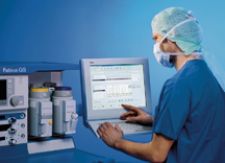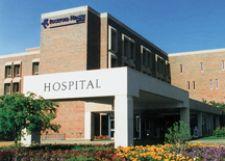
Alan Mowbry M.D., staff anesthesiologist at Rockford Memorial Hospital, recounts how the Innovian Anesthesia Data Management System provides the 490-bed hospital with seamless integration with anesthesia, monitoring and networking solutions - even during a power outage.
Consistently ranked as one of the “Top 100 Most Wired Hospitals in the U.S.” by Hospitals and Health Networks magazine, Rockford Memorial Hospital is a 490-bed community hospital in Rockford, Il that performs approximately 10,000 surgical procedures annually.
The hospital had been using Draeger Medical’s Saturn perianesthesia system for over three years. It was an excellent product, which enabled us to automate documentation and greatly facilitate overall anesthesiology department management. However, it was running on a dated operating system. So in 2004, we transitioned to Draeger Medical’s Innovian Anesthesia system, which runs on either the Microsoft Windows 2000 or Windows XP operating system. All of the data we had collected with Saturn over three years migrated smoothly to Innovian Anesthesia.
Basic Benefits of Innovian
Innovian has all the advantages of the most current technology available, while retaining the clinical functionality of the Saturn product. The Innovian Anesthesia data management system seamlessly integrates with anesthesia, monitoring and networking solutions to provide a comprehensive, real-time overview of patient information (including labs, previous surgical history
and allergies).
By automatically capturing vital signs, Innovian Anesthesia allows our care providers to spend more time with patients. Our PACU nurses easily save up to 10 minutes per patient per hour in manual charting. Plus, we are able to demonstrate regulatory compliance, and automatic charge capture means we’re not missing reimbursement opportunities — and we’re being reimbursed in days, not weeks or months.
Innovian’s Fault Tolerance Saves the Day
Recently, we discovered an additional benefit of the Innovian technology, in a most unexpected way. Rockford Memorial experienced a complete electrical shutdown of the institution’s hospital information systems and clinical networks. Maintenance crews were installing new air conditioning ducts in the server room, and dust from the installation blew into the fire sensors. The sensors, interpreting the dust as smoke, suddenly activated and pumped FM-200 fire suppressant gas into the room. As a result, all electricity to every server in the hospital was cut, the servers shut down and there was no communication between the operating room and the servers.
While most of the hospital staff scrambled to accommodate the power outage and IT staff worked to restore operations, the 10 surgeries underway at the time of the incident went on without interruption or impact to the patients. Those in the OR had no idea anything was wrong. This was possible because the operating suites were supported by Innovian.
The key aspect of Innovian that shone through during the server shutdown was its fault tolerance. Because Innovian allows anesthesia workstations to function without connection to the server, they were able to continue running while all of our other software systems (including remote and Web-based applications) were down. Surgeons reported being unaware that the rest of the hospital was experiencing a potential crisis. (No patients were negatively affected by the outage, but it took four hours before the network was running again.)
The robustness of the Innovian system and the fact that it is a thick client solution gave it remarkable ability to perform in this type of disaster. Innovian also prevented any loss of anesthesia data, which could have taken the hospital months to recover. Our IT people called it an excellent example of data protection in the clinical setting.
Innovian’s required data fields, time stamps and electronic signatures provide an extremely comprehensive record. It is a next-generation information management tool that really helps us get where we want to go. And the strength and reliability of Innovian’s architecture during a time of crisis shows exactly why a fault-tolerant system is necessary in the acute point-of- care environment.



